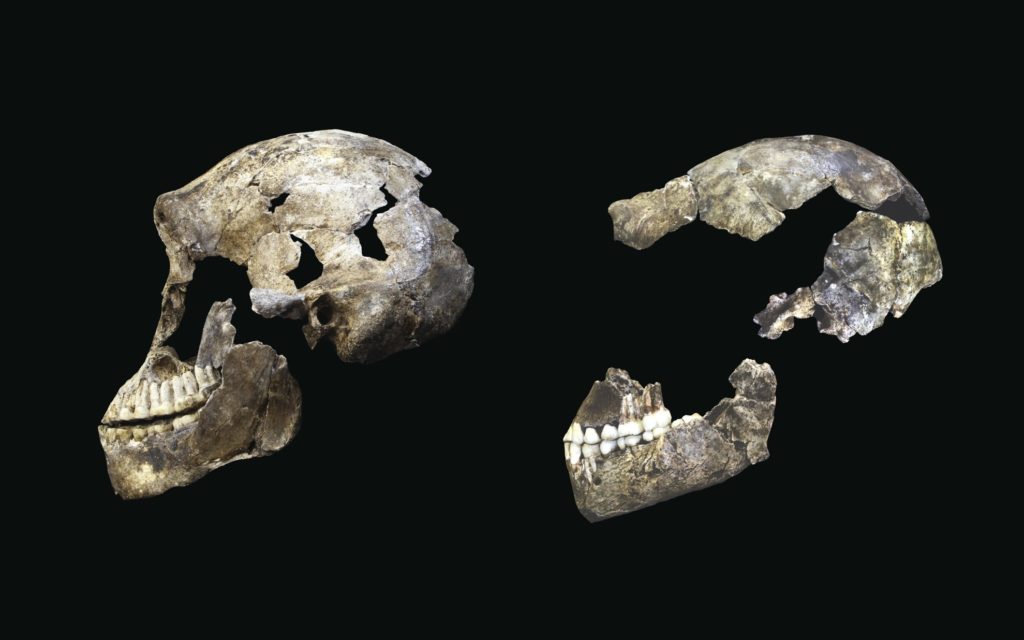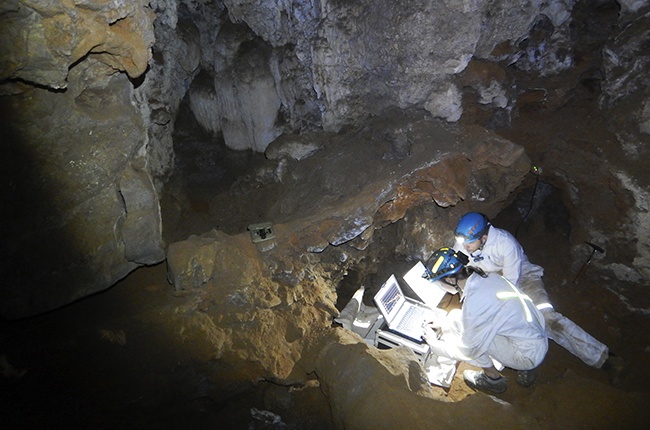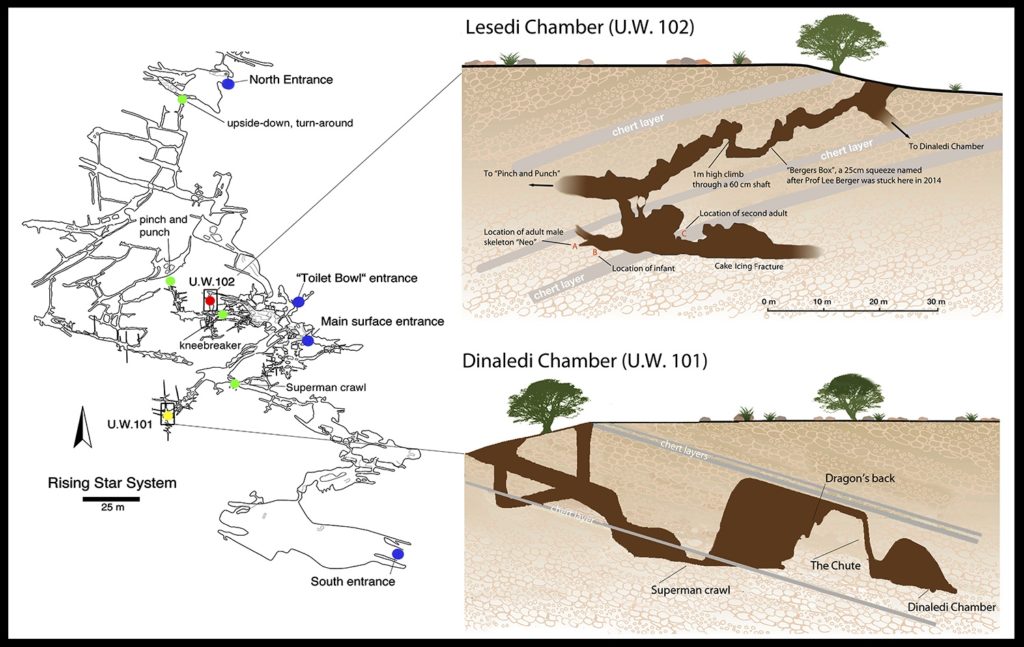A group of researchers that includes a Texas A&M University anthropologist have determined that the fossil remains discovered last year in a South African cave very likely coexisted with Homo sapiens, marking the first time it has been demonstrated that another species of hominin survived alongside the first humans in Africa.
Darryl de Ruiter, Professor of Anthropology and Cornerstone Faculty Fellow in the College of Liberal Arts at Texas A&M, and colleagues have had their work published in the current issue of the journal eLife (https://elife.elifesciences.org)
The group says that a second chamber in the South African cave system called Rising Star contains additional skeletal remains of Homo naledi that include a child and partial skeleton of an adult male with a well-preserved skull. The discovery of Homo naledi in the cave drew international attention last year because it is believed it was a species of a new human relative and it could reveal new secrets about mankind’s origin.
“This is the first time it has been demonstrated that another species of hominin survived alongside the first humans in Africa,” de Ruiter explains.
“It means we can no longer be certain about precisely who created the archaeological record of the later Middle Pleistocene of Africa, the exact time period when our Homo sapiens was making its first appearance.”
“The other groundbreaking discovery is that we have further proof that Homo naledi intentionally buried their dead and the bodies we found in the cave show that they were deliberately placed in the cave soon after death.
“Neanderthals and their ancestors – which go back about 400,000 years – and humans are the only species we know that intentionally buried their dead, so this cave adds another species to the list of relatives who participated in this most human of behaviors.”
The new discovery and research was done by a large team of scientists from the University of Witwatersrand in South Africa and more than 30 additional universities and institutions.
The age of the original Homo naledi remains found in the cave system has been revealed to be younger than previously believed and was lived between 335,000 to 236,000 years ago. It places these particular small-brained hominins at a time and place in which they likely lived alongside Homo sapiens, marking the first time that is has been shown that another species of hominin survived alongside the first humans in Africa.
de Ruiter says that at least 15 individual skeletons appear to have been intentionally placed in the cave, ranging in age from infants to elderly adults. It likely represents some form of systematic disposal of the dead, but from there the mystery grows deeper.
“We do not know how they died, nor exactly how old the remains are,” he adds. “We suspect there are many more skeletons down there, maybe even hundreds, and the cave has different levels where many more skeletons might be found.”
The body size of the skeletons is similar to that of a small-bodied human, de Ruiter notes, except that the skulls are much smaller than humans. Although their hands and feet are human-like, their trunk, shoulders and hips are quite primitive in size and shape, “and this unique combination of characteristics is unlike any previously known human relatives. We gave them the named Homo naledi, which means ‘star’ after the cave, which is known as the Rising Star cave,” de Ruiter adds.
de Ruiter says the cave system could reveal many more secrets because it has numerous levels and chambers that have yet to be explored.
The project was funded by the National Geographic Society, the National Research Foundation of South Africa, the Gauteng Provincial Government, and the Texas A&M College of Liberal Arts Seed Grant Program.
###
Media contact: Darryl de Ruiter at (979) 458-5986 or deruiter@tamu.edu or Keith Randall, News & Information Services, at (979) 845-4644 or keith-randall@tamu.edu
For more news about Texas A&M University, see https://today.tamu.edu/.
Follow us on Twitter at https://twitter.com/TAMU








